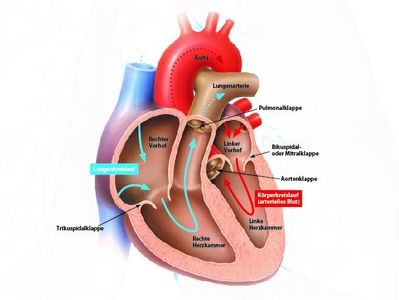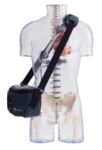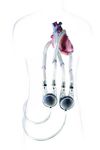The heart
How does the heart work?
The human heart is a highly specialized muscle that consists of two halves. Each of these halves possesses one atrium and one ventricle. Each half is in charge of a separate circulatory system: the right half is in charge of the "small" pulmonary circulation, the left half is in charge of the "large" systemic circulation.
At the end of the large systemic circulation, the "used" oxygen-depleted blood passes via the upper and lower vena cava into the right atrium and then into the right ventricle. From there it is pumped into the lungs, where it is replenished with oxygen. The now reoxygenated blood passes via the pulmonary veins into the left atrium and onto the left ventricle. The blood is now pumped back into the large systemic circulation via the aorta (main artery). Here it is supplied with vital oxygen and nutrients by bodily parts such as organs and cells.
A healthy heart is able to beat around 70 times per minute for a lifetime, and to pump around 70 ml of blood with every beat. A complex electrical conduction system controls the pumping processes. The sinoatrial node found in the right atrium delivers electrical impulses so the heart is able to beat. These impulses spread over the entire heart, triggering pumping movements by activating the particular muscles required.



